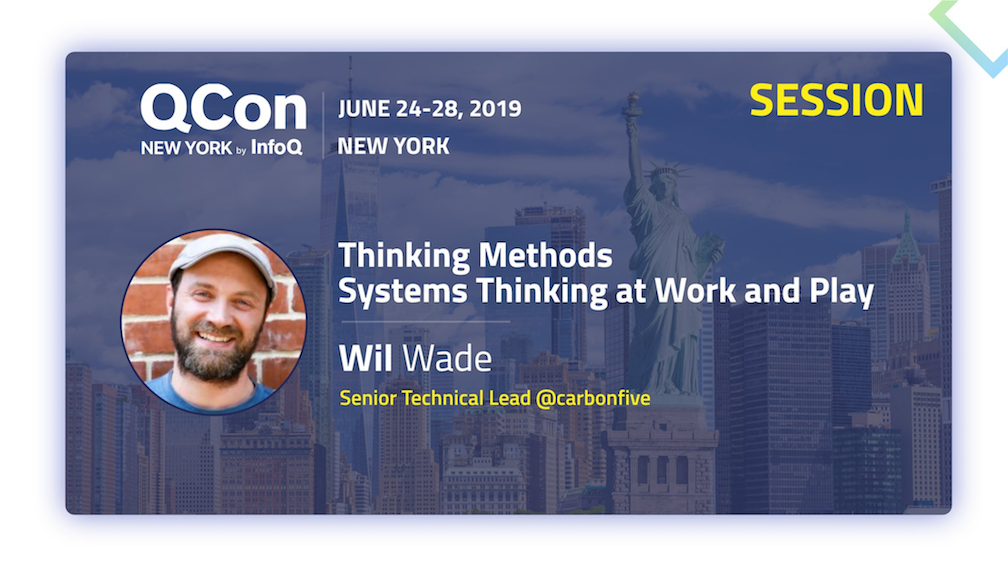Articles on Software Design
Greenfield Projects: Seven Ways to Set Yourself Up for Success
Greenfield projects have a hidden set of needs — and each one can be an opportunity for growth if handled well! But if handled poorly or if not handled at all, these pitfalls can perpetuate and multiply across the lifetime of the project, taking you further and further away from your treasure and further into the endless cave of despair.
QCon Talk: Thinking Methods
Wil Wade, senior developer at Carbon Five, will be speaking at QCon New York on June 25. His talk on thinking in systems focuses on understanding the context of this complexity through the patterns and structures around us; a perfect complement to Agile’s small iterable steps. This interview was originally published on QCon New York.
Writing Deterministic & Performant Specs with Capybara
Acceptance tests are a great tool for guiding [outside in testing] and defining application behavior. Unfortunately they are also notoriously slow and often brittle. At Carbon Five we usually use Capybara to drive our acceptance tests (either directly in RSpec feature specs or within Cucumber steps) so let’s explore some ways we might accidentally write …
Designing mobile APIs – dynamic content
On mobile devices native UIs offer superior responsiveness and performance but web views offer flexible layouts and data driven content. How can we combine the strengths of both to produce a highly responsive UI which can display dynamic data from a remote server?
Designing mobile APIs – error handling
While designing an api I need to provide reliable error responses to both protocol and application level errors. Here I’ll consider any error response generated outside our application stack to be a protocol error while those errors returned from my application’s codebase are classified as application level errors. On a recent project I started to …
Designing mobile APIs – basic behaviors
As Rails developers we design APIs on a regular basis: routes for browsers to interact with a web app, JSON apis and routes for client side javascript to build dynamic pages, payloads queued for background processing on a server, and so on. As we move into mobile development we can benefit from many of the …
Abusing UIViewControllers
UIViewControllers are a fundamental building block of most iOS applications. Unfortunately many developers seem to use them in unintended and unsupported ways which leaves their apps vulnerable to bugs, rejections, unpredictable behavior under new iOS releases, and with controllers which are difficult to update or reuse. The core misconceptions behind this abuse of UIViewController are …
iPhone Distributed Computing Fallacy #8: the network is homogeneous
Reviewing the 8 classic “fallacies of distributed computing” and how we can avoid them when writing iOS applications. The fallacies of distributed computing The network is reliable. Latency is zero. Bandwidth is infinite. The network is secure. Topology doesn’t change. There is one administrator. Transport cost is zero. The network is homogeneous. Fallacy #8: “the …
iPhone Distributed Computing Fallacy #7: transport cost is zero
Reviewing the 8 classic “fallacies of distributed computing” and how we can avoid them when writing iOS applications. The fallacies of distributed computing The network is reliable. Latency is zero. Bandwidth is infinite. The network is secure. Topology doesn’t change. There is one administrator. Transport cost is zero. The network is homogeneous.
iPhone Distributed Computing Fallacy #6: there is one administrator
Reviewing the 8 classic “fallacies of distributed computing” and how we can avoid them when writing iOS applications. The fallacies of distributed computing The network is reliable. Latency is zero. Bandwidth is infinite. The network is secure. Topology doesn’t change. There is one administrator. Transport cost is zero. The network is homogeneous.

